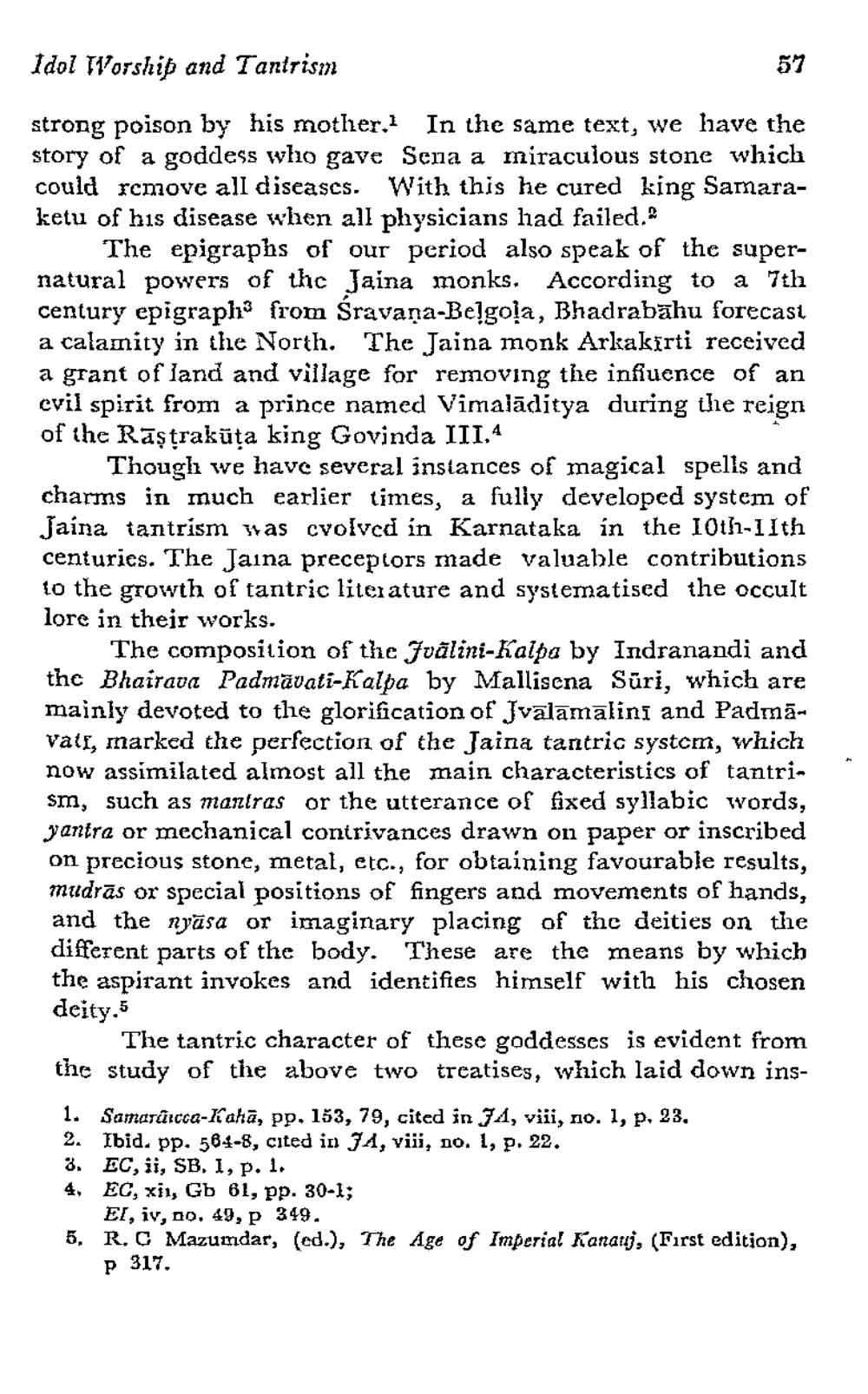________________
Idol Torship and Tantrism
57
strong poison by his mother. In the same text, we have the story of a goddess who gave Sena a miraculous stone which could remove all diseases. With this he cured king Samaraketu of his disease when all physicians had failed.
The epigraphs of our period also speak of the supernatural powers of the Jaina monks. According to a 7th century epigraph from Sravana-Beļgola, Bhadrabahu forecast a calanity in the North. The Jaina monk Arkakirti received a grant of land and village for removing the influence of an cvil spirit from a prince named Vimalāditya during the reign of the Rāştrakūta king Govinda III.4
Though we have several instances of magical spells and charms in much earlier times, a fully developed system of Jaina tantrism was cvolved in Karnataka in the 10th-11th centuries. The Jaina preceptors made valuable contributions to the growth of tantric literature and systematised the occult lore in their works.
The composition of the Juālini-halpa by Indranandi and the Bhairava Padmavati-Kalpa by Mallisena Sūri, which are mainly devoted to the glorification of Jvālāmalins and Padmāvali, marked the perfection of the Jaina tantric system, which now assimilated almost all the main characteristics of tantrism, such as mantras or the utterance of fixed syllabic words, yantra or mechanical contrivances drawn on paper or inscribed on precious stone, metal, etc., for obtaining favourable results, mudrās or special positions of fingers and movements of hands, and the nyāsa or imaginary placing of the deities on the different parts of the body. These are the means by which the aspirant invokes and identifies himself with his chosen deity,5
The tantric character of these goddesses is evident from the study of the above two treatises, which laid down ins1. Samarûicca-Kiahā, pp, 153, 79, cited in 34, viii, no. 1, p. 23, 2. Ibid. pp. 564-8, cited in 34, viii, no. 1, p. 22. 3. EC, ii, SB. 1, p. 1. 4, EC, xii, Gb 61, pp. 30-1;
El, iv, 20. 49, p 349. 5. R. C Mazumdar, (ed.), The Age of Imperial Kanauj, (Fırst edition),
p 317.




